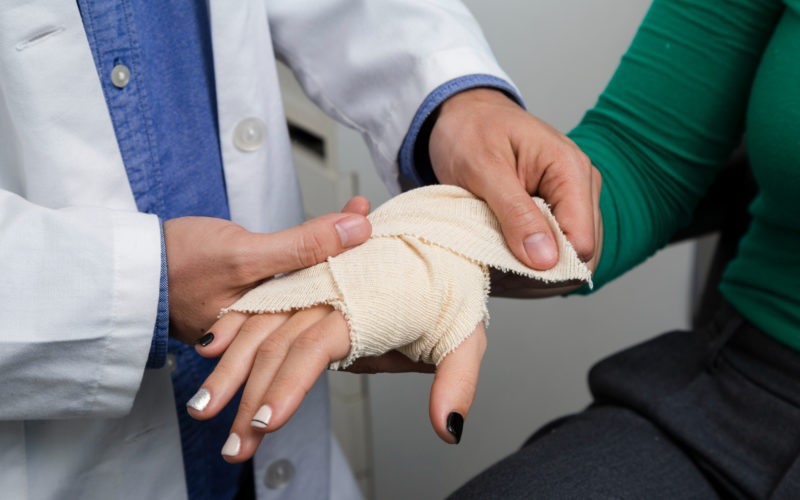Today, organizations exist in a complex environment and, therefore, the safety of employees is of great importance. Regrettably, the arm, wrist, and hand are among the most vulnerable body parts in many fields and industries. Personal injury solicitors like Watermans can help employers ensure compliance with safety regulations to protect their employees. It is important to understand the employer’s responsibility for these injuries, especially under the legal provisions, such as the Health and Safety Executive (HSE). This article will discuss the duties of employers in the workplace, and their legal obligations in the case of arm, wrist or hand injuries.
Understanding Employer Responsibilities
It is the legal requirement of the employers to ensure that the employees are safe at the workplace. This includes implementing adequate safety measures to prevent injuries. HSE has outlined that for employers to meet the requirements of the law, they must meet some standards that are as follows. This includes implementing adequate safety measures to prevent injuries. HSE regulations provide ways on how employers can minimize the occurrence of workplace accidents and injuries.
The Role of HSE Regulations
HSE is central to the administration of workplace safety policies. Employers are required to adhere to the HSE standards in a bid to minimize the risks of injuries. Some of the regulations are on the aspects such as PPE, ergonomics, and safety inspection. Noncompliance with these standards can lead to rather severe fines and legal punishments. It is not only mandatory to follow the OSHA standards, but it is also the right thing to do.
Risk Assessment and Prevention
Risk assessment should be conducted frequently so that all possible dangers at the workplace can be noted. Employers should consider the probability of arm, wrist, and hand injuries and then prevent them. This could include ergonomic assessments, provision of correct personal protective equipment and training. Employers should be able to identify the risks early enough so that they can be prevented from happening, thus making the working environment safer.
Legal Avenues for Compensation
Workers are allowed to sue for compensation in case of an injury. Workers’ compensation insurance is meant to provide for medical expenses and lost wages that are as a result of workplace injuries. This insurance is mandatory for employers to take in order to safeguard their employees. Also, if an employee sustains an injury due to the negligence of the employer, the employee may be entitled to file a personal injury case. It is equally important for the employers as well as employees to understand the legal rights that they have to seek compensation.
Addressing Employer Liability
There are several factors that may lead to employer’s legal responsibility for workplace accidents. Some of the problems include lack of proper maintenance of equipment, lack of adequate training for the employees, and failure to adhere to safety standards. Employer negligence is also a basis for an employer being held responsible for an employee’s injury. Employers need to make sure that all the safety measures are complied to to reduce the chances of being held accountable.
Importance of Training and Education
It is important for employees to be trained and educated when it comes to safety measures to avoid workplace accidents. Employers should ensure that they provide training sessions to the employees on the safe working practices from time to time. This includes training on how to use tools, equipment and protective clothing, and the need to observe ergonomics. Employees with adequate knowledge about their line of work are less likely to get injured, hence the employer has low risk.
Implementing Ergonomic Solutions
There are many ways to prevent arm, wrist, and hand injuries and ergonomics is one of them. Employers should consider promoting ergonomic features like adjustable furniture and equipment that would help lessen the pressure exerted on the body. These ergonomic evaluations can be carried out on a regular basis to determine where changes should be made. These solutions can be effectively put into practice to significantly decrease the occurrence of repetitive strain injuries.
Ensuring Proper Medical Attention
The best thing that a person can do is seek medical help immediately when an injury has taken place. Employers should also have measures in place on how to deal with injuries as they happen. This entails having first aid kits easily accessible and making sure that the employees are conversant with their usage. It can also help make sure that injuries are treated by medical professionals and do not lead to complications.
Promoting a Culture of Safety
It is crucial to have a culture of safety within the workplace. Employers should promote the reporting of hazards and ideas for change. Daily safety talks and reporting can help make the workplace safer. Overall employee safety is crucial, as employees are more likely to follow safety guidelines when they feel their safety is valued
Workplace safety and especially the employer responsibility for arm, wrist and hand injuries is a complex problem. By following the HSE guidelines, performing risk analysis periodically and offering necessary training and equipment, the chances of getting injured will be minimized. Another important step is to know the legal ways of getting compensation, and the other is to encourage people to report incidents. It is now high time for employers to understand their roles and ensure that they do all that is possible to ensure that the working environment is safe for everyone. In this way, they not only meet legal obligations but also ensure the safety of their workers and avoid possible legal consequences.












